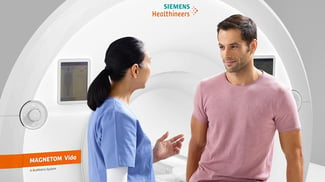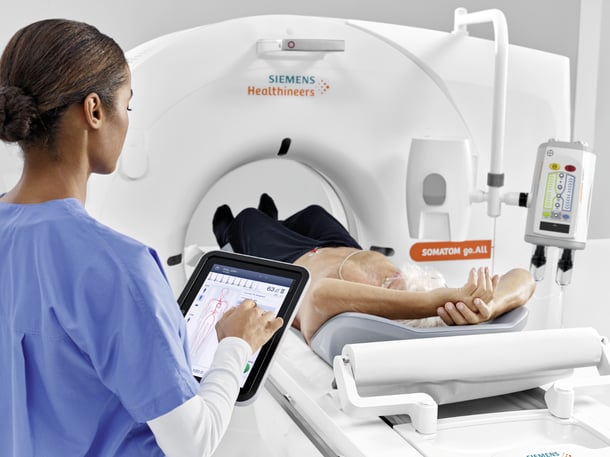 With existing scheduling backlogs, radiology technologists are feeling the pressure to move fast. While patient volumes have swelled, staffing challenges have left a less-than-optimal workforce with a bigger workload. A critical element of care can suffer on account of this pressure: patient communication.
With existing scheduling backlogs, radiology technologists are feeling the pressure to move fast. While patient volumes have swelled, staffing challenges have left a less-than-optimal workforce with a bigger workload. A critical element of care can suffer on account of this pressure: patient communication.
Effective patient communication is already a topic of concern in radiology. While there's a case for providing more training opportunities to support good patient communication, there's also a conversation to have about how the equipment used by a facility can impact patient communication and, ultimately, comfort. The systems technologists rely on to do their job directly impact how and when they communicate with patients -- for better or for worse.
Points of friction
When it comes to the setup of an MRI or CT scan, older systems generally require more manual interaction. Technologists have to spend time setting up appropriate parameters and making adjustments to ensure a patient is positioned in a proper and comfortable way.
As these interactions take place, technologists spend less and less time with the patient. These moments of separation create communication gaps at a time when a patient is apt to experience some level of anxiety and stress.
Then, there's the actual scan time. Older MRI and CT scanners often take longer to acquire and process imaging sequences, more specifically with lower field strength magnets and lower slice scanners. The discomfort of lengthy scans, paired with the noise levels of older scanners, limits opportunities for communication and can leave patients feeling isolated.
To put this all into perspective, one study showed that one-third of patients experienced moderate to severe anxiety in an MRI exam -- to a degree that two patients had to end their scan prematurely. Considering that uncertainty was one of the biggest catalysts for stress, there's a case to be made for investing in equipment that supports improved automation and shorter scan times to allow more time for communication.
Better communication
Modern CT and MRI systems are built to operate with greater efficiency. On the one hand, they can adapt more easily to a patient's anatomy through the use of breathable coils. At the same time, they're able to deliver advanced imaging quality at a low dose.
Faster setups and scans create room for technologists to interact more with patients -- before, during, and after scans are complete. And those conversations don't have to happen with a wall between patient and provider. Some modern systems come equipped with mobile workflows that allow technologists to stay close to patients during scans, answering questions and providing reassurance as needed.

Good communication is not just limited to when the test is taking place. Even before the procedure, an open conversation about what a patient is going to experience can set the individual at ease. Then, ongoing rapport with the technologist helps ensure this relaxed experience continues throughout.
Providing the opportunity for the technologist to have effective communication with the patient has a positive impact on completing a successful diagnostic study. Improved technology also contributes to the experience of the patient and the overall outcome of the exam. Providing the radiologist with complete, high-quality images results in a thorough review and reporting of the findings from the exam.
The radiologist or referring physician is then afforded the ability to relay the scan results to the patient, which also contributes to a positive overall experience. Clear, sharp, rich-in-contrast imaging ultimately assists radiologists in addressing patient concerns and questions with greater confidence. This is how new technologies help build trust and support better outcomes.
Role of equipment
Digital tools are a critical part of patient communication, but they can't replace the value of face-to-face interactions. The more time radiologic technologists can spend with patients and the more meaningful conversations they can have, the better the patient experience becomes.
Whereas older CT and MRI scanners can hinder the patient experience -- especially in a high-volume workload -- modern systems open the door to better communication. And today, when patients have many options for radiology care, that's key.
This article was originally published on AuntMinnie.com on April 5, 2024. Click here to view the original article.






Comments